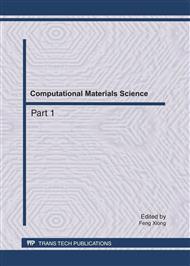p.1553
p.1559
p.1564
p.1568
p.1574
p.1579
p.1585
p.1591
p.1595
Performance Evaluation for Impact of Self-Similarity in Control Network
Abstract:
The impacts of self-similar traffic on network performance has received much attention recently, however the effects of control network on self-similar traffic networks has not been fully investigated yet. Therefore, the objective of this paper is to to understand self-similarity on physical grounds in a realistic network environment. This understanding is important when developing efficient and integrated network frameworks within which end-to-end QoS guarantees are fully supported. We first introduce the techniques that we use to generate self-similar network traffic .Then we compare the performance of an Ethernet segment run with heavy-tail traffic and with exponential traffic. Our study results show that self-similar traffic, compared with traditional short-range dependent models, requires longer queues and thus larger buffers in the control network design.
Info:
Periodical:
Pages:
1574-1578
Citation:
Online since:
July 2011
Authors:
Price:
Сopyright:
© 2011 Trans Tech Publications Ltd. All Rights Reserved
Share:
Citation:


